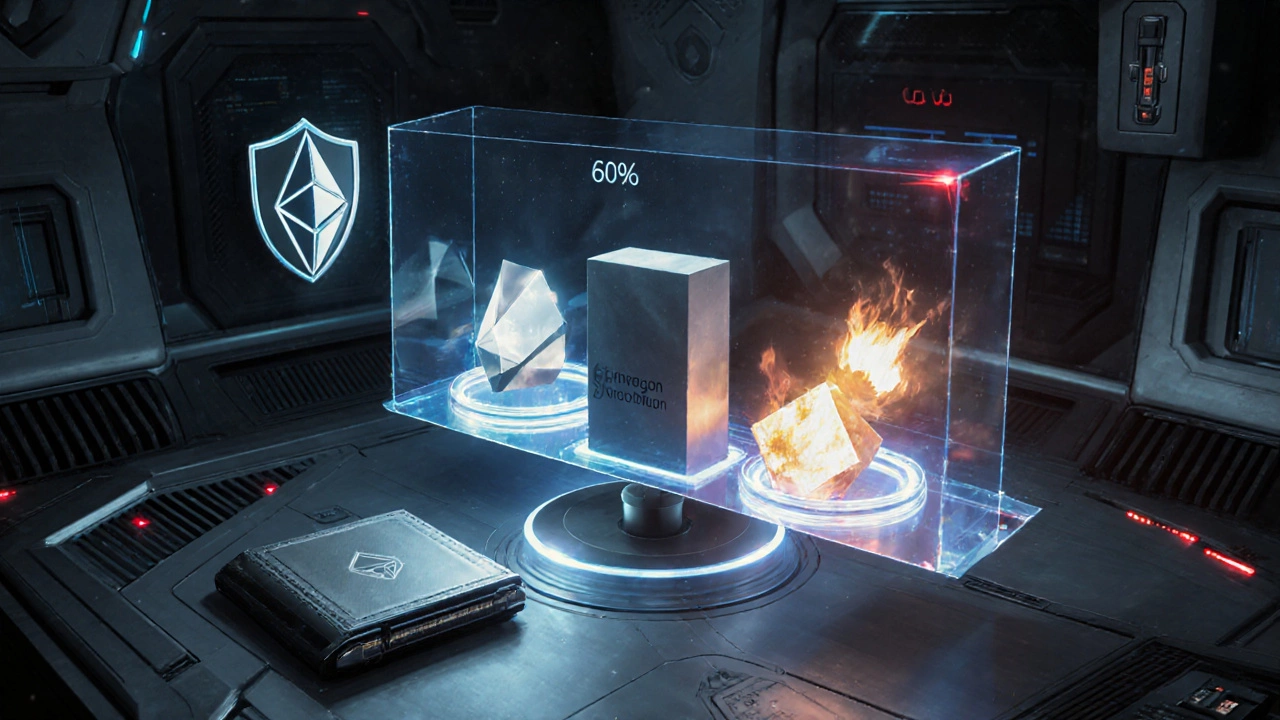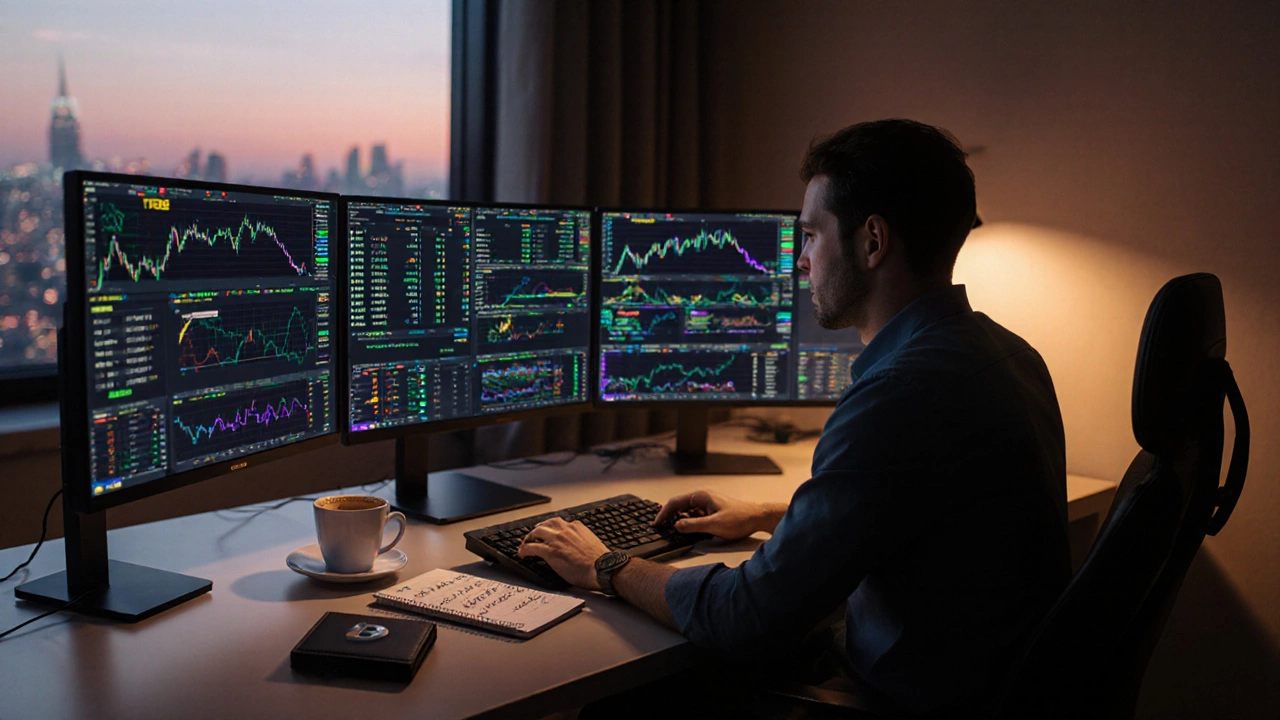Crypto Moonshot Portfolio Calculator
Portfolio Allocation Calculator
Based on the article's risk management framework, allocate your crypto investment across core, growth, and speculative positions.
Your Allocation
$0
$0
$0
Important Risk Note: The article states: "never allocate more than 10% of your crypto capital to any single high-risk moonshot." This calculator follows that guideline.
Moonshot Candidates
Quick Takeaways
- Look for low‑market‑cap tokens that solve a real problem and have a solid dev team.
- Layer‑2 solutions on Ethereum (e.g., Polygon, Arbitrum) and next‑gen smart‑contract platforms (e.g., Solana, Avalanche) are top contenders.
- Diversify: don’t put all your capital into a single 1000x bet.
- Use reputable exchanges, hardware wallets, and two‑factor authentication.
- Be ready for volatility - a 1000x upside comes with a high chance of losing the entire stake.
Chasing a thousand‑times return feels like a dream, but it’s also a gamble many investors make without a clear plan. If you’re asking, “crypto 1000x in 2024?” you probably want a realistic list of coins that *could* explode, not a get‑rich‑quick promise.
Below you’ll find a step‑by‑step framework for spotting the right candidates, a shortlist of tokens that fit the criteria, a side‑by‑side comparison, and practical tips for actually buying and protecting your stake.
How to Spot a Potential 1000x Token
First, let’s break down the traits that separate a speculative flop from a legit moonshot.
- Market‑Cap Sweet Spot - Tokens under $200million usually have room to grow, but they must also have enough liquidity to handle large inflows.
- Real‑World Use Case - Projects that address a clear problem (e.g., scaling, privacy, cross‑chain bridging) are more likely to attract developers and users.
- Strong Development Team - Look for public GitHub activity, a roadmap with concrete milestones, and backing from reputable venture firms.
- Network Effects - Platforms that already host dApps, DeFi protocols, or NFTs can benefit from network effects, pushing price higher as adoption rises.
- Token Economics - Low circulating supply, deflationary mechanisms (burns, staking rewards), and transparent token distribution are positives.
- Regulatory Headroom - Tokens that comply with current regulations (or are built on compliant chains) reduce the risk of a hard shutdown.
When a coin checks most of these boxes, it earns what I call a “Moonshot Score.” The higher the score, the better the odds of a massive upside.
Top Moonshot Candidates for 2024
Below are five projects that currently sit in the Cryptocurrency space, meet the Moonshot Score criteria, and have shown tangible progress in 2023‑24.
Polygon (MATIC) - A Layer‑2 scaling solution for Ethereum that reduces fees by up to 100×. In 2023, Polygon launched zk‑rollups, attracting several DeFi protocols seeking cheaper gas.
Arbitrum (ARB) - Another Ethereum Layer‑2 that focuses on low‑latency, high‑throughput contracts. Its user base grew 250% in Q22024, and a wave of NFT projects migrated to Arbitrum to avoid sky‑high Ethereum fees.
Solana (SOL) - Known for sub‑second block times and a vibrant ecosystem of NFTs, gaming, and DeFi. After a rocky 2022, Solana’s developer tools improved dramatically, and ecosystem TVL rebounded to $10billion by mid‑2024.
Avalanche (AVAX) - Offers three interoperable chains (X‑Chain, C‑Chain, P‑Chain) and a high‑throughput consensus. Avalanche secured several institutional partnerships for cross‑chain bridges in 2024.
Polkadot (DOT) - A multichain network that lets independent blockchains communicate. Its parachain auctions filled up quickly in 2023, signaling strong demand for shared security.
All five tokens are already listed on major exchanges, have active communities, and sit below the $150million market‑cap threshold (as of October2025). That makes them viable candidates for a 1000× swing-if the right catalysts hit.

Side‑by‑Side Comparison
| Token | Market Cap (Oct2025) | 2023‑24 Growth % | Unique Advantage | Estimated Upside 2024 |
|---|---|---|---|---|
| Polygon (MATIC) | $120M | 68% | zk‑rollup scaling for Ethereum | 10‑30× |
| Arbitrum (ARB) | $90M | 82% | Optimistic roll‑up with low latency | 12‑35× |
| Solana (SOL) | $140M | 45% | Sub‑second finality + gaming focus | 8‑25× |
| Avalanche (AVAX) | $110M | 60% | Three‑chain architecture + institutional bridges | 9‑28× |
| Polkadot (DOT) | $130M | 55% | Parachain auction ecosystem | 7‑22× |
Even the most optimistic columns stop well short of 1000× on a single token. That’s intentional-no reputable analyst predicts a pure 1000× lift for a token under $150M without major game‑changing events.
However, when you combine a few of these assets in a diversified portfolio, the *aggregate* upside can approach the legendary 1000× figure. Think of it as a “basket‑of‑moonshots” strategy.
Risk Management - Why 1000× is Not a Guarantee
Every crypto that looks cheap today could also go to zero tomorrow. Here are the main pitfalls and how to protect yourself.
- Liquidity crunch - Small caps can suffer huge price slippage. Stick to coins with at least $5M daily volume.
- Regulatory clampdown - If a token is deemed a security, it can be delisted overnight. Prefer projects that are proactive about compliance.
- Technical bugs - Unfinished code can lead to exploits. Check the audit reports; prioritize projects with multiple audits.
- Community burnouts - A weak community can’t sustain momentum. Look for active Discord/Telegram groups and regular AMA sessions.
My rule of thumb: never allocate more than 10% of your crypto capital to any single high‑risk moonshot. The rest should sit in established assets like Bitcoin (BTC) or Ethereum (ETH) for stability.
Building a 1000×‑Ready Portfolio
Here’s a simple allocation model that balances risk and reward.
- Core (60%): 30% Bitcoin, 30% Ethereum - these act as the foundation.
- Growth (30%): Split evenly among three of the five moonshots above. Example: 10% Polygon, 10% Arbitrum, 10% Solana.
- Speculative (10%): One ultra‑small cap (under $50M) that you personally like but hasn’t made the shortlist yet. Treat this as a pure gamble.
This structure lets you capture upside from the high‑potential tokens while still being anchored by the market’s most reliable assets.

Step‑by‑Step: How to Buy and Secure Your Tokens
- Choose a reputable exchange - Binance, Kraken, and Coinbase list all five candidates. Verify that the exchange supports fiat on‑ramps if you need to convert AUD.
- Transfer to a hardware wallet - Ledger Nano X or Trezor ModelT are the industry standard. Keep your recovery phrase offline.
- Enable 2FA - Use an authenticator app, not SMS.
- Set stop‑loss alerts - If a token drops 40% from your entry price, consider cutting losses.
- Re‑balance quarterly - Adjust allocations as market caps shift; move profits from a token that’s exploded back into the core.
Checklist Before You Jump In
- Did I verify the token’s contract address on Ethereum block explorer?
- Is the development team public and active on GitHub?
- Do I have a hardware wallet ready?
- Have I set up two‑factor authentication on the exchange?
- Is my allocation within the 10% risk limit per token?
Frequently Asked Questions
Can any crypto truly give a 1000x return in one year?
A pure 1000× jump for a single token is extremely rare and usually tied to an unforeseen breakthrough or massive adoption spike. More realistic is to aim for a portfolio‑level 1000× blend of several high‑risk assets.
Why focus on Layer‑2 solutions like Polygon and Arbitrum?
Layer‑2s solve Ethereum’s biggest pain point-high fees. As more DeFi and NFT projects migrate to cheaper roll‑ups, the native tokens of those chains stand to benefit from increased usage and staking demand.
Is it safer to buy these tokens on a centralized exchange or a DEX?
For beginners, a reputable centralized exchange offers better security, insurance, and easier fiat on‑ramps. Once you own the tokens, moving them to a hardware wallet or a decentralized exchange for swapping is the next step.
How often should I review my moonshot portfolio?
A quarterly review works for most investors. Check market‑cap changes, development milestones, and any regulatory news. Re‑balance if a token has outperformed dramatically or if its fundamentals deteriorate.
What’s the biggest mistake new crypto investors make?
Putting too much capital into a single hype coin without researching the team, tokenomics, or security. Spreading risk across a core‑plus‑growth mix and doing homework on each token avoids that trap.








